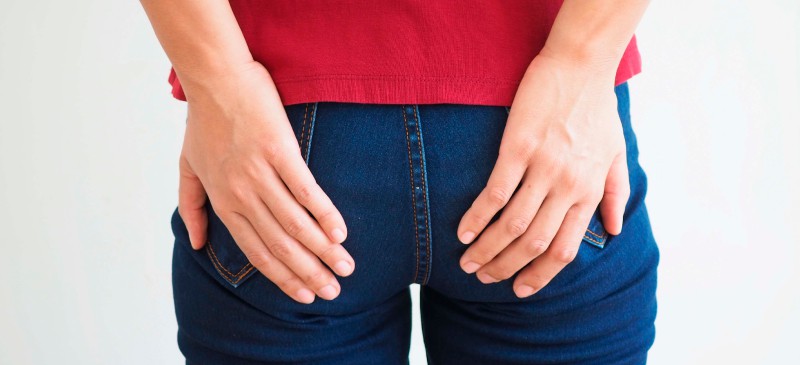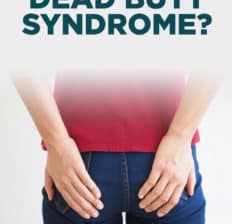This Dr. Axe content is medically reviewed or fact checked to ensure factually accurate information.
With strict editorial sourcing guidelines, we only link to academic research institutions, reputable media sites and, when research is available, medically peer-reviewed studies. Note that the numbers in parentheses (1, 2, etc.) are clickable links to these studies.
The information in our articles is NOT intended to replace a one-on-one relationship with a qualified health care professional and is not intended as medical advice.
This article is based on scientific evidence, written by experts and fact checked by our trained editorial staff. Note that the numbers in parentheses (1, 2, etc.) are clickable links to medically peer-reviewed studies.
Our team includes licensed nutritionists and dietitians, certified health education specialists, as well as certified strength and conditioning specialists, personal trainers and corrective exercise specialists. Our team aims to be not only thorough with its research, but also objective and unbiased.
The information in our articles is NOT intended to replace a one-on-one relationship with a qualified health care professional and is not intended as medical advice.
How to Treat and Prevent ‘Dead Butt Syndrome’
March 4, 2022

“Dead butt syndrome” might sound like a joke of a name, but make no mistake about it — this is a real condition that can cause distressing symptoms.
What is dead butt syndrome? It’s a postural problem that occurs in someone’s glutes (aka the butt muscles) in which the muscles weaken and can no longer effectively stabilize the pelvis. This leads to problems with body alignment, strength and ability to function.
What’s the primary cause? Too much sitting, which is a contributing factor to many other health problems too, such as obesity, depression and poor digestion.
The solution is to sit less, move more and regularly incorporate butt-lifting exercises into your workout routine. These steps can help “wake up dead glutes” and restore your posture, strength and mobility.
What Is Dead Butt Syndrome?
Dead butt syndrome, also known as gluteal amnesia, is a problem affecting the glute muscles that occurs from inactivity and a sedentary lifestyle.
According to an article published in the International Journal of Sports Physical Therapy,”The Gluteus Maximus (GM) muscle is the largest and most powerful in the human body. It plays an important role in optimal functioning of the human movement system as well as athletic performance. It is however, prone to inhibition and weakness which contributes to chronic pain, injury and athletic under-performance.”
When you don’t use your glute muscles enough and sit in a fixed position for long periods of time, this causes your hip flexors to tighten, your glutes to weaken and your posture to become poor.
Gluteal amnesia basically boils down to a lack of muscle activation in your butt. A restriction of range of motion in your hips and glutes causes muscle compensations in your lower body and pushes your body out of alignment, leading to problems like weakness, lower back pain and stiffness.
There’s a reciprocal relationship between the hip flexors and glutes, so if the glutes aren’t activating, then the hip flexors tend to take over. Then, when you stand up or exercise, your hips and back can become strained since your glutes aren’t doing their job.
Symptoms
What is dead butt syndrome capable of doing to your body? While you’re most likely to feel restricted in your butt and hips, it’s possible for symptoms to spread to your back and lower legs too due to how different muscle groups and joints/ligaments are connected.
Some symptoms you may develop if you have gluteal amnesia include:
- Tight hip flexors, which can result in aches in your lower back, especially when standing up straight, as well as poor posture overall.
- Lower back pain, since it can cause your pelvis to tilt forward, which strains your back. You might find that you lean forward a bit.
- Poor balance.
- Weakness in your lower body when trying to exercise. You may feel that you can’t feel your glutes engage or contract when squeezing them.
- Knee pain and foot pain.
- Potentially higher risk for developing problems like disk herniation, patellofemoral (knee) syndrome, iliotibial band syndrome and piriformis syndrome.
Causes
The primary cause of dead butt syndrome (gluteal amnesia) is siting for hours each day without enough exercise, movement and stretching. As explained above, this causes inactivation of the glutes and muscular compensations affecting the hips and back.
People who work for long hours at a desk or who have long commutes that involve sitting down are at the greatest risk of developing dead butt syndrome. Adults over 40 are also prone to experiencing this condition since they tend to rely on more muscular compensations.
Another possible cause is failure to activate the glutes properly when you are exercising.
In order to maintain healthy body alignment and prevent muscle compensations, you need to activate the right muscles in your butt, legs and hips — including your quadriceps, hamstrings and glutes. If you work out with poor form, then you may be neglecting your gluteus muscles and develop dead butt syndrome as a result.
How to Treat and Prevent
The best way to prevent butt dead syndrome is to avoid sitting too much and exercise in a way that strengthens and activates your lower body. Prevention is key, since according to the University of Michigan Health blog, “It takes nearly twice as long to revive a dying butt with exercise and movement than it does to develop the condition.”
One key step to take in preventing this problem is getting up often when sitting down to walk around and stretch.
You can remind yourself to take breaks for movement by setting a timer on your phone, watch or computer. Try to get up about every hour (or even more often) to move around.
If you work in an office, sneak exercises and stretches into your day by doing things like walking to co-workers’ desks, taking the stairs, going for a walk outside, etc.
You can also work at a standing desk for part of the day or sit on an exercise ball, which engages your core more.
When you are sitting down, don’t cross your legs for long periods. This can pull your hips out of place.
Keep both feet level on the floor, and try to sit up right to not strain your back.
How long does it take to fix glute amnesia?
If you regularly perform “dead butt syndrome exercises” and avoid being sedentary, you can probably start to reverse the problem and see improvements within about two to three months.
How can you test if you have dead butt syndrome?
You can determine if you’re suffering from this problem by performing any exercise where the glutes should be activated more than any other muscle group. If you feel your glutes contracting and working, then this is a good sign. If other muscles have taken over, such as your quads or hamstrings, then there’s a chance you have gluteal amnesia.
Good exercises to test for glute activation include single-leg glute bridges (performed on your back) and standing one-leg circles.
Dead Butt Syndrome Exercises
Dead butt syndrome exercises can help wake up glutes that are underperforming, but you first need to form a mind-muscle connection to be sure you’re contracting your glutes. While doing the exercises below, focus on contracting your glutes, and pay attention to other muscles that might be doing more work than they should.
Here’s how to fix dead glutes using targeted lower-body exercises:
- Glute squeezes — Begin by simply contracting your glutes and then relaxing them over and over, about 10 to 20 times. This helps lengthen tight areas and stimulate blood flow to warm up the tissues.
- Squats — Stand with feet hip-distance apart. Then bend your knees, and lower down like you’re going to sit in chair. Put your weight onto your heels, keep your knees pushed back over your ankles and then try to push your butt as far back as possible. Repeat 10 to 20 times.
- Clam shells/side-laying leg raises — This exercise is great for targeting the gluteus medius (the muscle located in the middle of the other two gluteus muscles, the gluteus maximus and the gluteus minimus, which tends to be weaker than other butt muscles). Lay on your side with your knees bent at 90 degrees and feet stacked on top of each other. Lift your top knee away from the bottom leg like you’re opening a clam, hold for one to two seconds and lower it back down. Repeat 10 to 20 times per side. Similarly, you can also do side-laying leg raises while laying on the floor, even while watching TV!
- Glute bridges — Lay on your back with your feet on the floor and knees bent. Engage your glutes, lift your hips off the floor and do a pelvic tilt. Then hold for a second, and lower down. Repeat 10 to 20 times. Focus on pushing your heels into the ground and generating the lift from your butt.
Other useful exercises for targeting the different muscles in your glutes include:
- Fire hydrants
- Lateral band walks
- Single leg squats
- Side planks with leg lifts
- Wall press leg lifts
- High step-ups on a chair
- Pistol variations
- Reverse lunges
In addition to performing dead butt syndrome exercises, be sure to stretch your hip flexors to help prevent pain. Hip flexor stretches include:
- Deeply held lunge
- “Pigeon pose” in yoga
- Seated butterfly stretch
- Supine stretch (while laying on your back with one knee bent as a time)
Conclusion
- What is dead butt syndrome? Also called gluteal amnesia, this condition occurs when your glutes (butt muscles) no longer activate properly, leading to weakness, poor posture and lower body pain.
- The primary cause of dead butt syndrome is siting for hours each day without enough exercise, movement and stretching.
- To wake up dead glutes, perform dead butt syndrome exercises regularly, and also avoid sitting for prolonged periods.
- Try getting up every hour to move around and walk. Build glute exercises into your workouts, such as squats, clam shells, hip dips and bridges.








